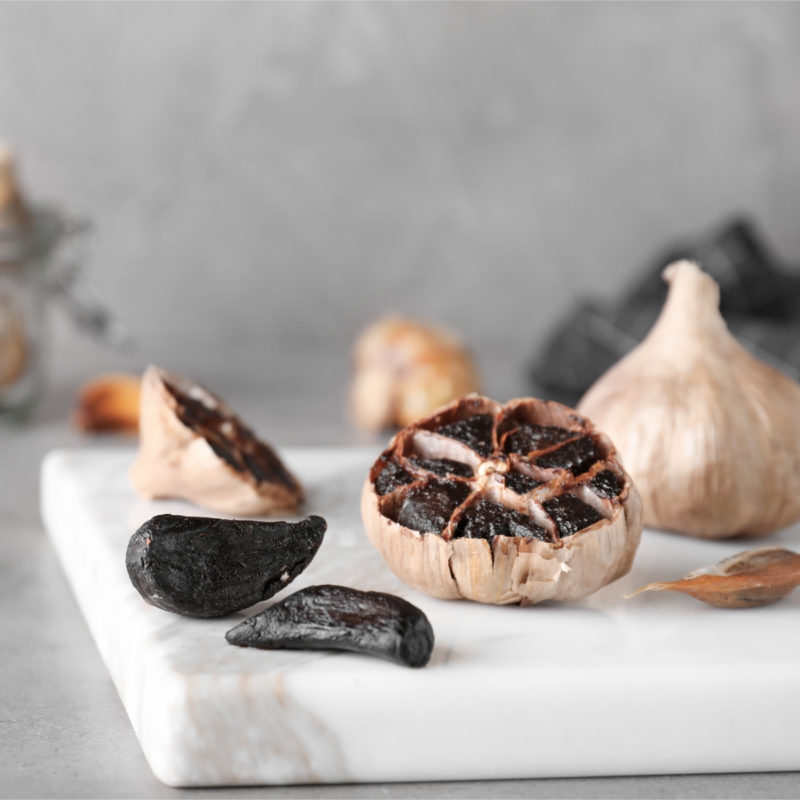Ah, garlic. We love it. We crave it. Many of us put in twice as much as a recipe calls for. There are few ingredients as iconic and prevalent in recipes, and even fewer with as long and storied a history as garlic. A member of the onion family, the garlic we know today likely originated in central Asia and has been used as food and medicine for more than 7000 years. Today, China is the top producer of garlic worldwide, and in the U.S., we consume more than 250 million pounds of garlic each year. Read on to learn more about types and parts of the garlic plant, its uses, and ways to feature it in your cooking.
Celebrate National Garlic Month this April

Cloves, Scapes, and Everything in Between

Garlic plants have two main parts: the bulb and the scapes. What we typically think of as garlic is the bulb, the white and sometimes purplish bunch of cloves that grows at the bottom of the plant. Scapes are the green stalks that grow from the top of the bulb. These can be eaten as well—they make appearances at the co-op over the summer (look for them in May and June!) and are found in many a CSA box—and have a much milder, garlicky flavor. Roast or sauté them with a little oil and salt, and they make for a delicious side to any meal.
Garlic can also be eaten at different stages of its growth. Young, immature garlic that has yet to start forming a head of cloves is called green garlic. Green garlic can be used just like garlic, though it will have a milder flavor, similar to garlic scapes. Black garlic, on the other hand, is garlic that has been aged for several weeks in a warm environment. This turns the cloves black and gives them a chewy texture and molasses-like flavor that brings a new dimension to many dishes, including meats, pastas, or simply added to butter. Black garlic can be made at home (with the right equipment that will keep it warm for multiple weeks) or it can be purchased.
Working with Garlic
 Garlic is often minced to be added into a wide variety of recipes, but it is also well suited to roasting and pickling. To roast a head of garlic, preheat the oven to 350 degrees. Wrap the entire bulb in two layers of aluminum foil and place on a sheet pan. Roast for about 30 minutes—it should be soft, but not burnt. Remove the bulb from the oven, unwrap the foil, and slice open with a serrated knife (this will keep the garlic from squishing too much). It can then be added to a number of recipes, including this one for Spicy Roasted Garlic Hummus.
Garlic is often minced to be added into a wide variety of recipes, but it is also well suited to roasting and pickling. To roast a head of garlic, preheat the oven to 350 degrees. Wrap the entire bulb in two layers of aluminum foil and place on a sheet pan. Roast for about 30 minutes—it should be soft, but not burnt. Remove the bulb from the oven, unwrap the foil, and slice open with a serrated knife (this will keep the garlic from squishing too much). It can then be added to a number of recipes, including this one for Spicy Roasted Garlic Hummus.
Pickled garlic also makes a great addition to recipes, and even to charcuterie boards (it can be eaten by itself, and has a much milder, and even sweeter, flavor). Check out this guide from National Co+op Grocers to quick pickling. Leave your veggies to pickle even longer for an even brinier flavor.
Recipes
Try these recipes to get the most out of your garlic:






